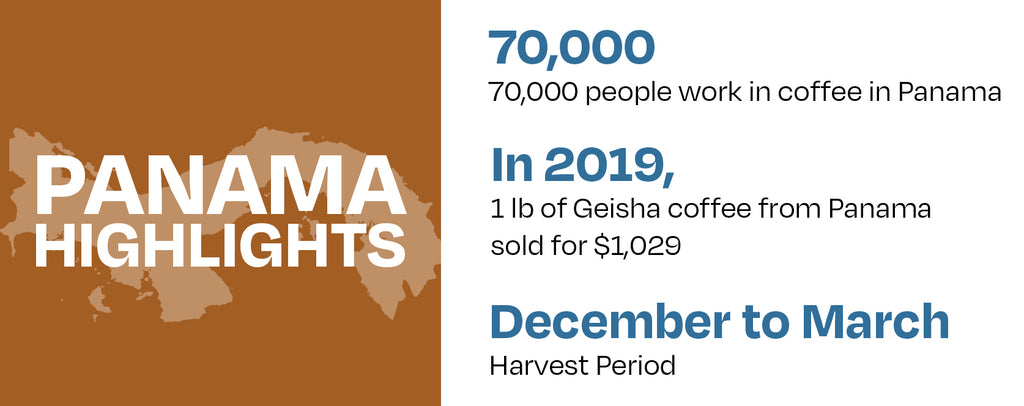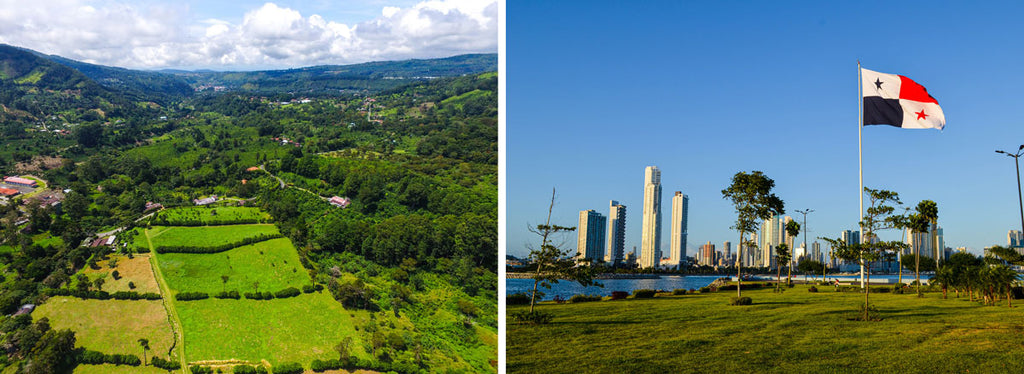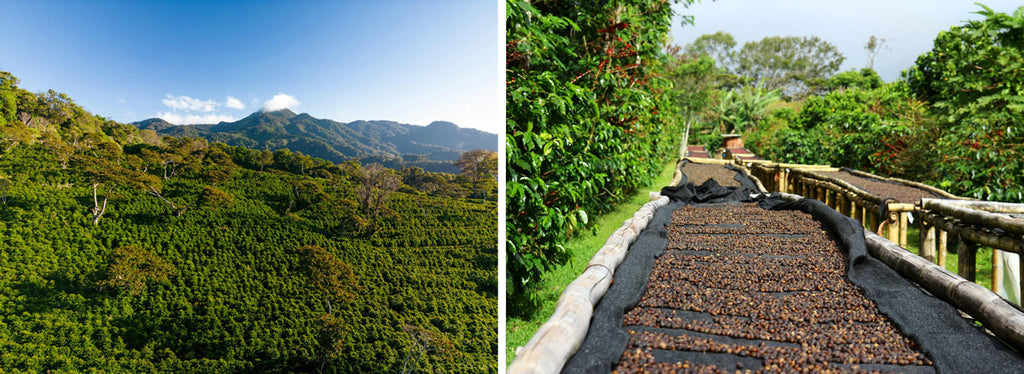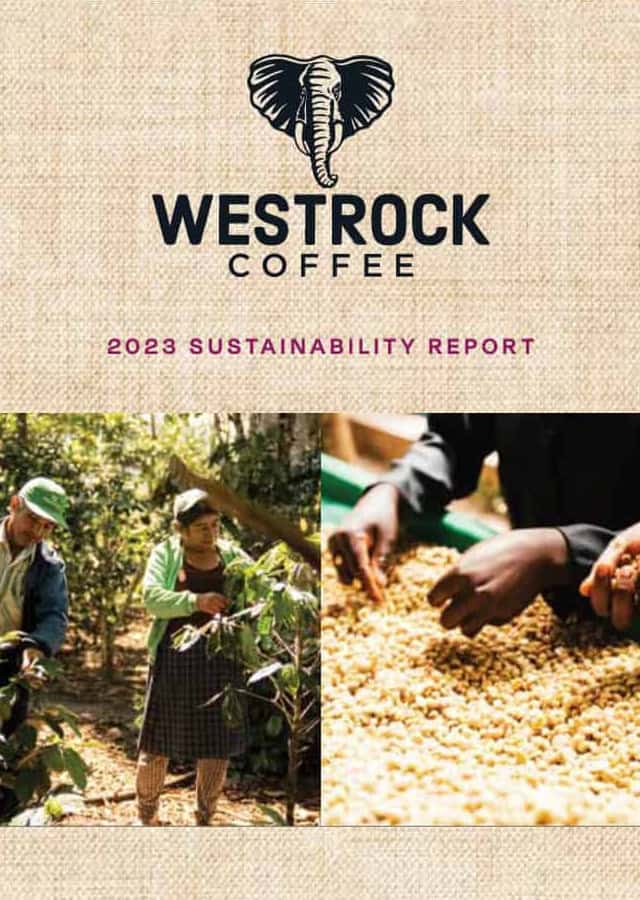May 8, 2024
Both Central and South America are integral to the global coffee industry, and between the two regions lies Panama, bridging the continental divide and making its own mark in the coffee industry. The s shaped isthmus is known for its tropical weather and beautiful beaches, but it also has a series of mountains and volcanoes, providing the elevation and rich soil needed to produce high quality coffee.

Almost half of the country is covered in forest, making it a refuge for many plants and animals but also puts the country at high risk for deforestation as agriculture encroaches on wooded areas. In fact, since the 1940’s over 50% of the native forest has been removed to make way for urbanization and agriculture. Although this is alarming, coffee farming can combat this as the popularity of agroforestry models increases in the industry.

Coffee first came to Panama in the late 19th century, brought to the country by European settlers, and planted in Chiriqui. Since then, coffee production has spread to Boquete and Volcán, however the Ngobe and the Bugle, indigenous tribes from Chiriqui, remain an important part of the Panamanian coffee industry.

Coffee production in Panama peaked in the 1990’s with the country exporting around 200,000 bags a year. Since then, production has declined, necessitating a different coffee production strategy. When it comes to quantity of coffee production, Panama cannot compete with juggernauts like Brazil and Vietnam, however, the country has carved out its own renown by producing high quality, coveted varieties like Geisha. Known as a premium coffee producing country, Panamanian farmers have been able to sell their coffee for high prices and create a thriving coffee tourism industry.

The success of Panama as a premium coffee destination has had far reaching effects. Today, most of the coffee farms in Panama are owned by international investors who have been able to fund improvements in infrastructure and ensure that environmental and social best practices are implemented. While this has allowed Panama to retain and grow its reputation as a grower of some of the most coveted coffee in the world, it has also led to increased land prices, pushing out many local small-holder Panamanian coffee farmers. Finding a balance between growing high quality specialty coffee and making room for producers of all levels in Panama has not yet been reached, however, increased interest in coffee tourism has the potential to allow the prosperity of the Panamanian coffee industry to reach many more individuals engaged in the coffee industry in Panama.

Like many other coffee lovers, at Westrock Coffee Company, our flavor experts enjoy Panamanian flavor for its sweet fruity flavor with notes that can range from berries to citrus, and from mango to peach with hints of dark cocoa.





